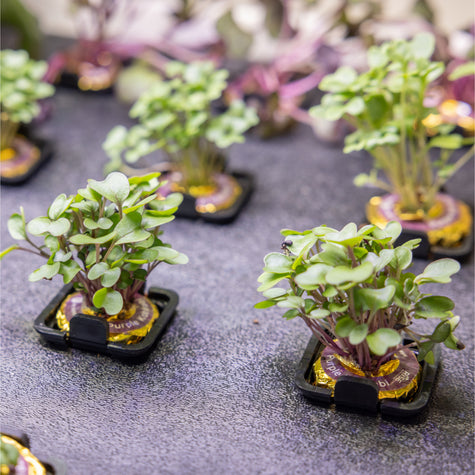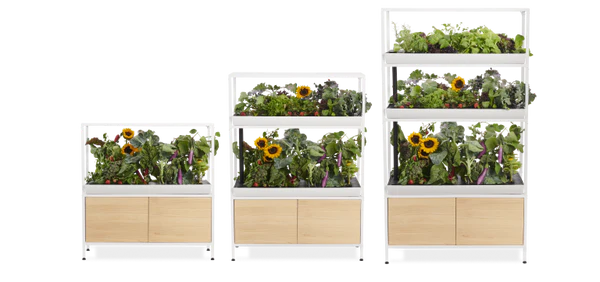When growing in an indoor vertical garden, it's important to keep everything organized and plants supported properly in order to maximize the space you have available. This means spacing out your plants properly, stopping larger, heavier plants from falling over, and training vining plants up and over to keep them from growing into your other plants.
That's where indoor garden accessories come in to play. These major issues can all be solved using Rise accessories. We offer an 8-pod, and 12-pod tray lid, for proper plant spacing, a Plant Stand for supporting the main stalk of your plant, and a Plant Trellis to allow for your vining plants to climb out of the way of your other plants.
Tray Lids
There are three types of tray lids that we offer. There is the standard 4-pod, the 8-pod, and the 12-pod tray lid. The 4-pod tray lid is best for growing larger plants, as it allows ample space between them. It's important to keep your plants correctly spaced out as this impacts their yield and general growth. If plants are crammed together, they don't get enough light, and their roots get tangled together.
The 8-pod tray has half the distance between plant holes as the 4-pod tray and is great for growing slightly smaller plants like beets, lettuce, and pac choy. This tray can also be used to start plants for growing in your outdoor garden. This keeps your plants compact so they don't take up too much space in your Rise Garden before they're moved into soil. The 12-pod tray is best for our smallest plants like microgreens, radishes, and arugula, which don't need as much room to grow.
One other effective way to grow using the 8-Pod Tray Lid, is to use it to crop plan your salad greens. By staging out your growth, you maximize your Garden’s efficiency and can produce a significant amount of salad from only one level. Learn more here on how to harvest a salad every day. This can actually be done with any plant and any amounts of weeks per growth zone!
Plant Stand
When large plants like peppers, tomatoes, and eggplant mature, they can be too top-heavy to stand on their own. In outdoor gardening, this calls for staking your plant with a wooden stake, or using a tomato cage. Supporting your plant to stay as upright as possible prevents uprooting from the base, helps keep the plant organized for harvesting, and stops your plant from growing into neighboring plants.
Our Rise Plant Stand clips into the base of your plant at the netcup. This keeps your plant stable, supported by the Tray Lid so that it does not flop over. You will also be able to tie your plant's stems to the rungs of the plant stand in order to keep the upper leaves and stems organized and out of the way of other plants.
To properly use your plant stand, you want to add it to your plant once it's taller than the plant stand itself. If you add the stand before then, it may get in the way of your plant growing while it's young. Once the stand is installed, you can tie your plant as it grows in order to organize individual branches of your plant.
Trellis
When growing any vining plants like peas, beans or cucumbers, your plant wants to grow tall and needs something to grow on. Otherwise, it can cover itself and grow into other plants, which will lead to less light for the plant, and thus less pods or fruit.
The Rise Trellis is a metal grid with detachable magnets that can be placed vertically on your bottom level, or horizontally on your top levels. This means that you can grow vining plants anywhere! The best method for trellising plants is to start them on your bottom level, in the back row. This allows you to trellis your plant up the back of your Garden. On your second level, add another Trellis so that you can guide your plant from one level to the next. As your plant grows, you also want to guide the plant horizontally as this will maximize the amount of light your plant gets. If you gently weave your plant through the holes of the Trellis when it is roughly 6” long, it will continue to grow in that direction with minimal guidance. In general, you should check that your plant is growing correctly every couple weeks and continue to weave your plant as necessary.

